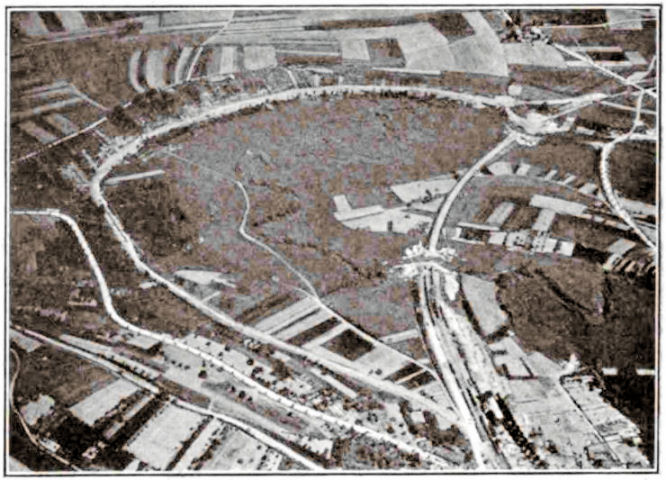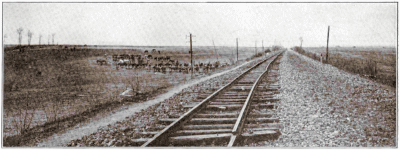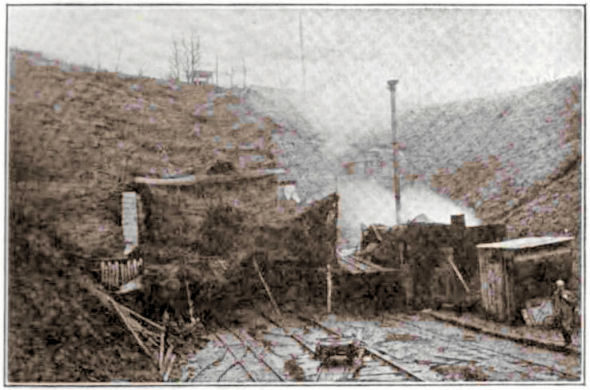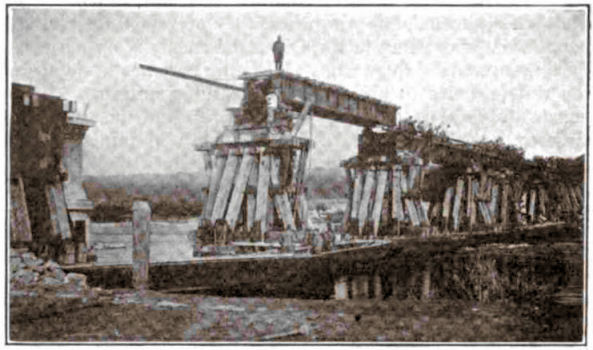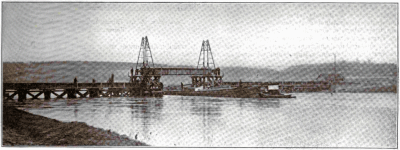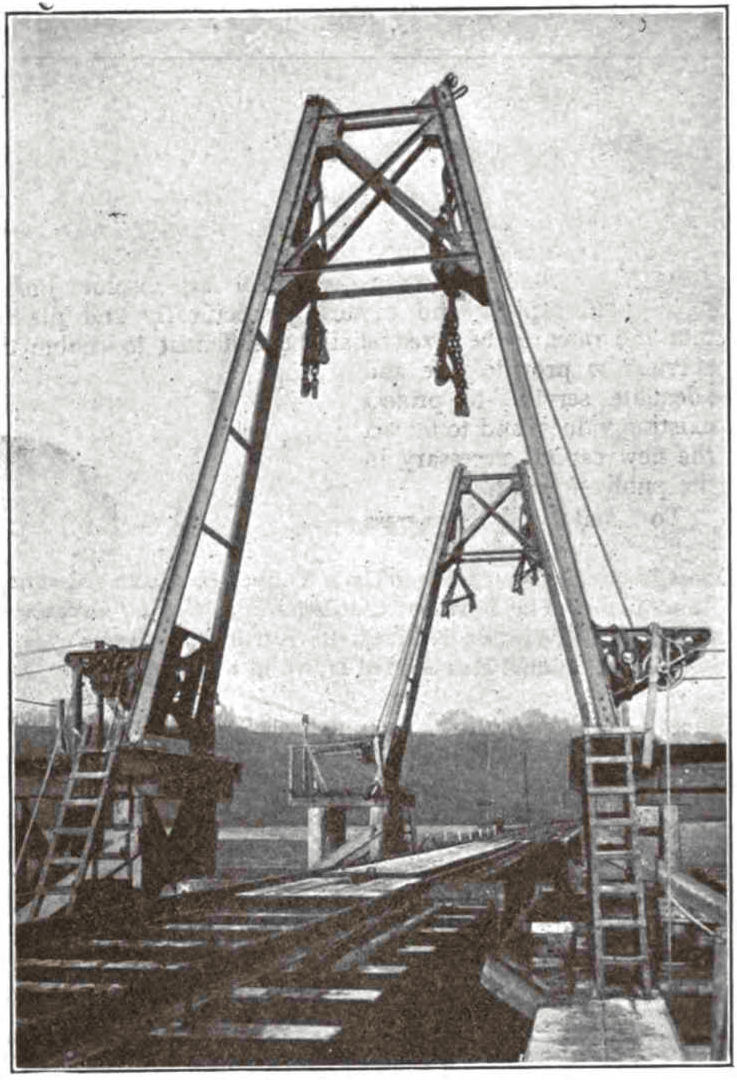|
Reconstruction des
chemins de fer
Railway Age
- vol. 67 - 1er août 1919
The
Reconstruction Program for French Railways
The Minister of Public Works and Transports Outlines
Work That Will Cost About $1,000,000,000
By Robert E. Thayer,
European Editor of the Railway Age
One of the largest
problems the French government had to face after the
cessation of hostilities on November 11, 1918, was the
reconstruction of the railways in the war zone, the
completion of improvements that were started in 1914 but
which were not completed on account of the war, and the
development of new lines made necessary by the increased
traffic and changed geographical conditions.
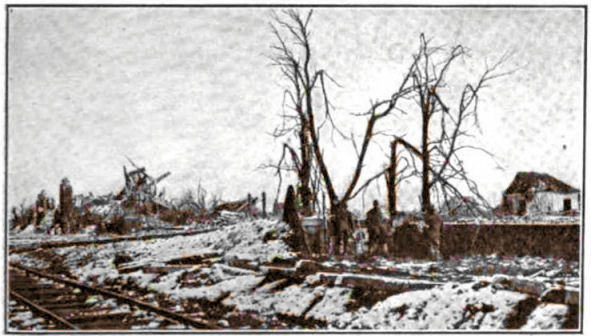
Destruction of the Station at Beuvaigue
This work is under
the jurisdiction of M. Claveille, minister of public
works and transports, who in an endeavor to get the work
started promptly has eliminated as much of the red tape
common to governmental operations as possible. On the
day following the armistice he asked the chief engineer
of his organization to obtain reports from the services
of the liberated regions showing the work necessary for
repairing the damages caused to lines of communication
of all kinds. He also asked for a list of work started
before the war. He also asked for a list of the projects
of equal importance which had been approved but not
passed upon; and of the projects not yet approved, but
sufficiently advanced to be submitted promptly to the
Administration, wherever these projects were really of
great utility. At the same time, the engineers were
requested to get in touch with the contractors for the
immediate resumption of the work they had been executing.
Where the work had not yet been assigned, the engineers
were asked to make arrangements to allot it to private
enterprises, contractors, or have it done under state
supervision as seemed best.
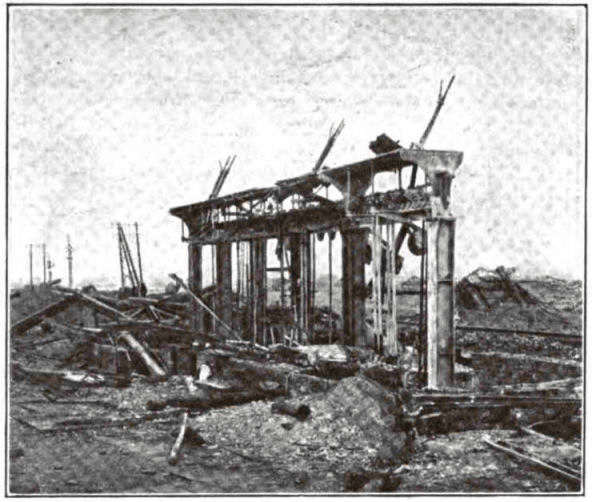
Destruction at Condien on the Aisne
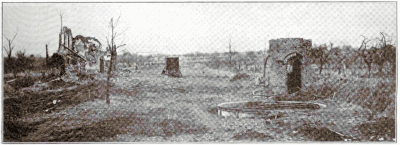
Destruction of the Station at Lassigny. In the
Foreground is Shown the Remains of a Water Tank and at
the Left Is What Remains of the Station. The Brick
Structure at the Right of the Water Tank Was a Signal
Tower The cost of the reconstruction work is to be borne by
the government of France under a law which was passed by
the Chamber of Deputies in the latter part of 1917. This
includes only the cost of putting the lines back into as
good condition as they were before the war, and any
expenses for improvements are to be submitted for proper
action in each particular case.
Reconstruction in the War Zone
The railroads of France are classified under two heads,
viz.: Principal railroads; railroads of local interest.
The principal railroads are those such as the Nord, Est,
Paris-Orleans, Midi, State, Paris-Lyons-Mediterranean,
and Ceinture. The railroads of local interest are narrow
gage lines operated with steam locomotives, and
correspond somewhat to the electric interurban lines in
the United States. They serve local communities and act
as feeders to the principal railroads without competing
with them for traffic.
Principal Railroads
The brunt of the damage to the principal French railways
caused by the war was borne by the Nord and Est railways,
the lines of which extended throughout the war zone. The
damage sustained by these lines was appalling. On the
Nord it can be said, in a general way, that all railway
material, including everything that goes to make up a
railway, included between the line of the extreme German
front of 1918 back to the frontier, was destroyed in a
systematic manner. The vastness of this area is well
illustrated by the accompanying official maps which show
the extreme German advance, the advance line of 1918,
the line existing at the signing of the armistice and
the Belgian frontier.
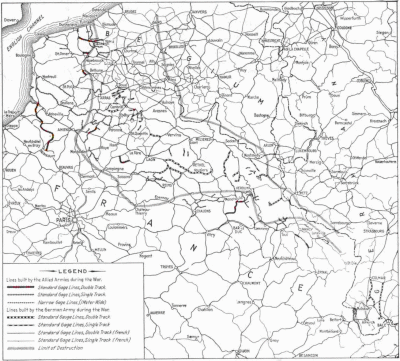
The Germans blew up all the bridges and constructions,
big and small, using very heavily charged mines which,
in most cases, not only destroyed the vaults or metal
flooring of
the bridges, but also the piers and abutments to their
very foundations. They blew up all the switches and even
destroyed the running track along distances of tens of
kilometers consecutively, either by blowing up every
other joint thus making the rails unserviceable, or by
tearing away the rail from the ties by using metal plows
(These plows consisted of a large triangle yoke of
heavy steel, one its of which was placed under the
rails) attached to locomotives. This latter method played such
havoc with the track that there was nothing left but to
completely clear away the
wreckage and entirely replace the rail and ties. It
should be added that the destruction continued for
several weeks after the armistice through the use of
delayed mines. In the stations of the invaded region,
the electric equipment, furniture, tools and supplies of
all kinds were destroyed or entirely removed by the
enemy.
On the Est there was the same destruction. All the part
of the railroad between the line of the extreme advance
of the enemy in July, 1918, and the line held on the day
the armistice was signed, was destroyed in battle or by
systematic devastation. On the line from Rheims to Laon,
between Rheims and Guignicourt, the embankment was
completely torn to pieces on account of the fact that it
was used for shelters, trenches and barbed wire
entanglements. The same was the case with the line from
Paris to Strassburg beyond Embermenil, and elsewhere.
Part of the line from Bazancourt to Challerange marked
the battle front for four years, and it was completely
torn up. In other places mines left craters 30 to 60 ft.
in diameter. Almost everywhere bridges and other
constructions were entirely or partly destroyed by the
enemy. Even in the region evacuated after the armistice,
some of the most important bridges were destroyed by the
Germans, whole piers and abutments being blown
completely out of the water, leaving openings more than
60 ft. wide.
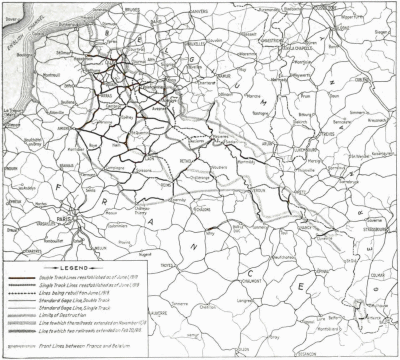
Eight tunnels were also entirely blocked up. Four of
these near Liart will require a very long time to clear
out on account of the unfavorable character of the
material through which the tunnel was bored. Two others,
one near Perthes, and the other at Manre, near
Challerange, although in the chalk, were so completely
blown up that the earth has sunk down through the whole
thickness from the surface to the vault. At Perthes
2,472,000 cu. ft. of debris had already been removed in
March, 1919, without yet reaching the parts of the vault
still in place. At Manre it is believed that between
6,000,000 and 7,000,000 cu. ft. of soil will have to be
removed before the tunnel can be opened.
The tracks in some places were completely removed by the
enemy, notably along a distance of 18.6 miles on the
Rheims-Laon line, 12.4 miles on the Rheims-Challerange
line, and 12.4 miles on the Bazancourt-Sedan line.
Everywhere else the destruction was carried out
systematically, generally by blowing up every other rail
joint, and occasionally by cutting the middle of each
rail. The destruction of the track by using plows, seen
so frequently on the Nord, was only employed on the Est
along one stretch 2.5 miles long, between Armagne and
Charleville. The switches were almost completely
destroyed or removed in all the stations of the region,
and all apparatus rendered useless.
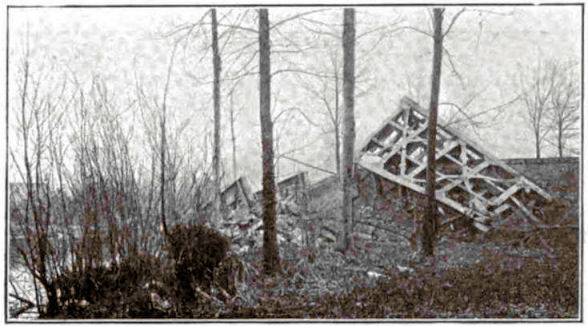
A Somme Bridge. This Damage Was Done by Dynamite. The
Force of the Explosion Was so Great That the End of the
Bridge Resting on the Left Bank of the River Was Thrown
Completely Across the River and Is Shown Upside Down at
the Right of the Illustration
The water pipes also were almost completely destroyed in
all places where they were not underground. The metal or
reinforced concrete tanks were also pulled down by
knocking out their foundations from under them. The
water
cranes are gone. The stations are either destroyed or so
damaged that they cannot be used without making
important repairs, and the same is often true of the
office buildings.
The signal poles have been removed from the whole region,
the enemy having used them for his cross-country lines,
destroying them when he retired. The signal interlocking
apparatus has been so damaged or changed that they will
almost all have to be reconstructed, even in the region
liberated after the armistice. The telegraph and
telephone lines, which in many cases had been increased
in number by the enemy, have been completely wrecked.
The poles are usually still standing, but all the copper
wires have been replaced by iron. Everywhere the
furniture in the stations, the machinery in the
terminals, the cranes and track-scales have been removed
or destroyed.
The following figures will give an idea of the damages
caused to the Nord and Est railroads:
Length ol track destroyed or damaged 1,803 Miles
(Being one-third of the total length operated on the two
roads in 1913.)
Length of single track lines out of service 3,480
Bridges destroyed 1,510
Tunnels destroyed 12
Buildings destroyed 590
|













